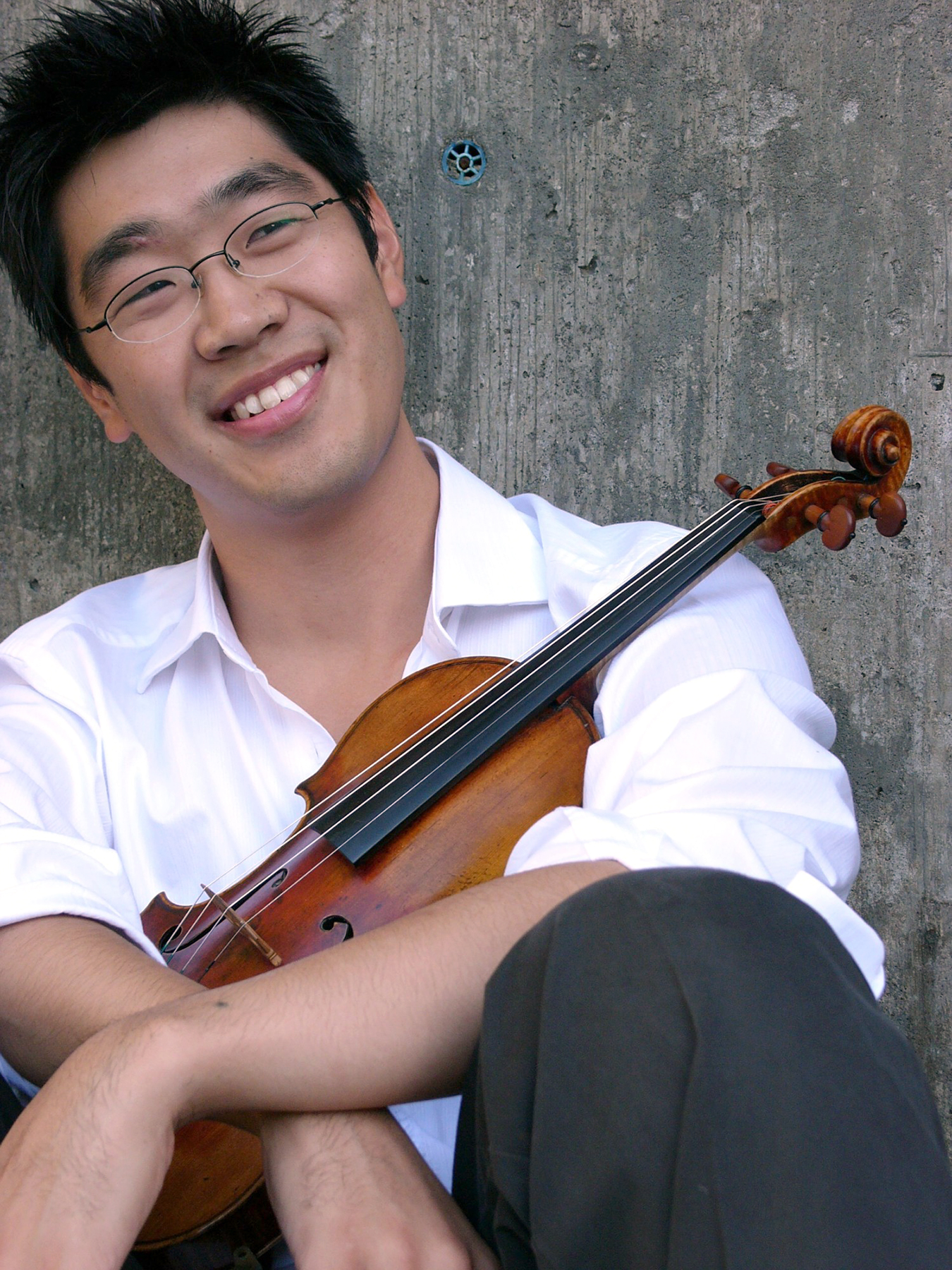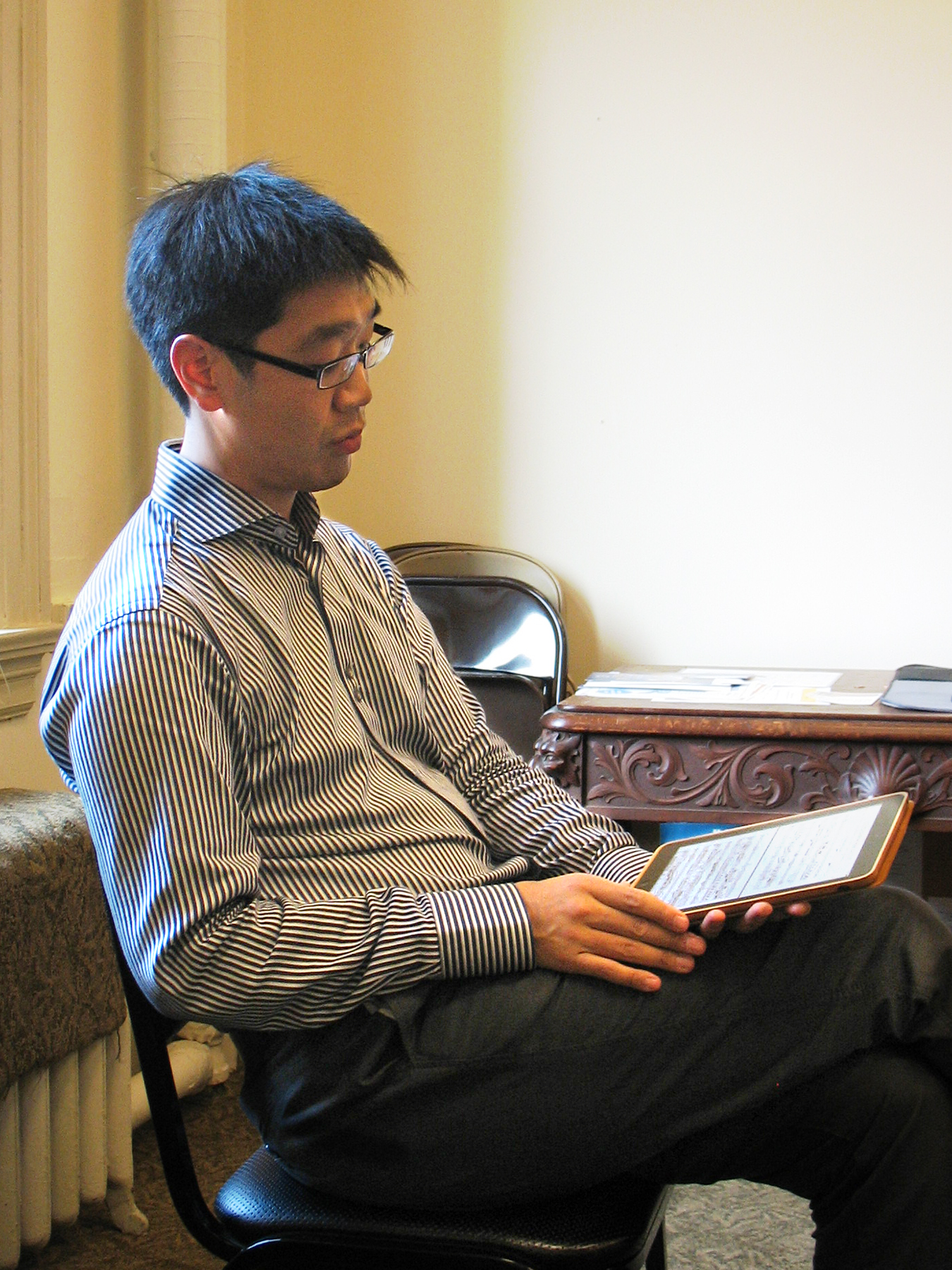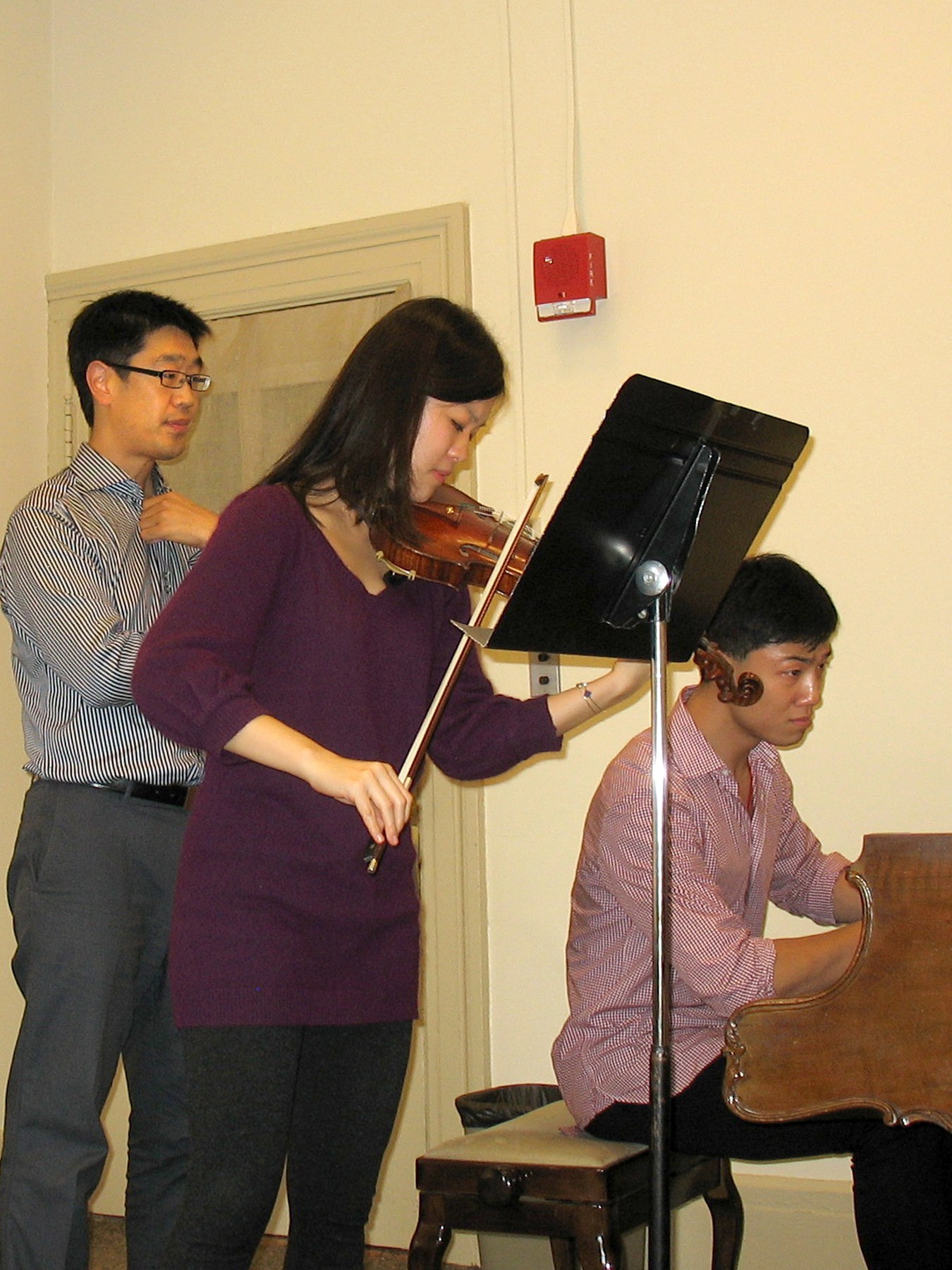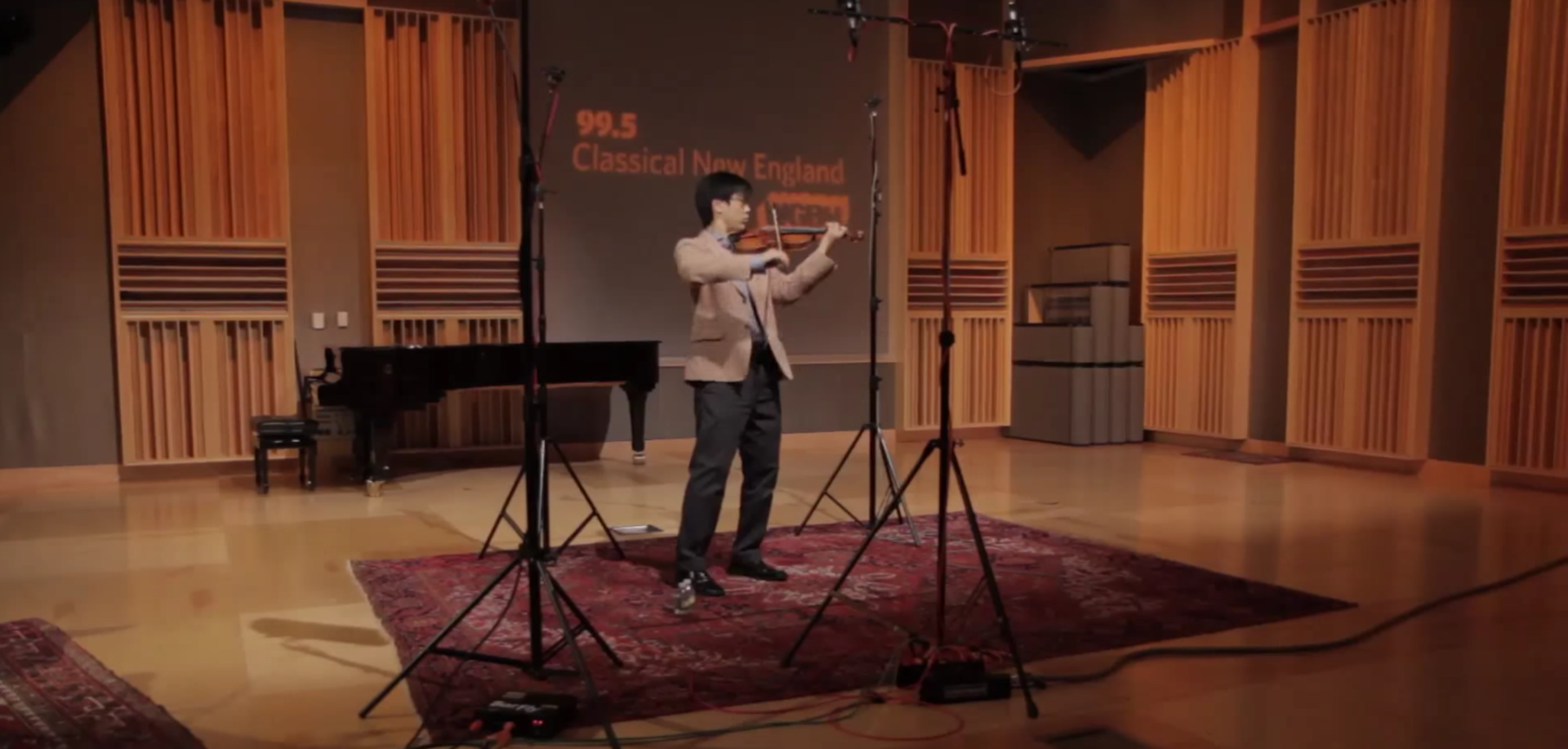
The young violinist and her pianist came for a lesson with Soovin Kim, bringing along the Mozart Sonata in B-flat Major, K.454. Kim, who joined the NEC faculty in September 2014, took out his iPad, clicked a few keys, and called up the score. He followed along as the musicians played the second movement Andante.
What followed then was not so much a violin lesson, as a music lesson led by a performer and teacher whose passion for music has never been limited to a single genre, medium, or era. Kim directed his thoughts at the pianist almost as much as the violinist, treating the Mozart for what it is, a piece of chamber music with the parts inextricably entwined, each speaking to and responding to the other. He sang as much as he talked. And when he talked it was often to pepper the students with questions, thereby encouraging mindfulness in their playing of particular passages. “What do you make of that F-sharp? “ “What’s really striking here is the repeat. It doesn’t often happen in Mozart that you get an exact repeat. What do you think of that?” “What do you think Mozart meant by the 32nd note flourish at the end of that violin phrase?”
With the aid of wifi, Kim offered some additional musical perspectives to the lesson. On his tablet, he called up a YouTube video of pianist Mitsuko Uchida playing the Andante from Mozart’s Piano Sonata No. 15 in C Major, K. 545. Not so far removed in time from the sonata the students were studying and written in the same tempo, it is a piece that Mozart described as a work for beginners. But its simplicity is deceptive and in Uchida’s hands its crystalline transparency and gentle fluidity became profound. Here was an object lesson. “It’s very much to do with the flow,” Kim said. “It’s not a slow tempo that she takes but it doesn’t feel rushed. There is a sense of so much time. Every time I hear this—and I’ve heard her do it often—I notice new levels and layers of meaning. She is always looking to go deeper, to find more. A great artist like this heightens our senses.”

In the same vein, Kim suggested that the students look at the score as edited by Artur Schnabel, who was the principal teacher of pianist Leon Fleisher, who Kim counts as a “friend, colleague and mentor." “Schnabel changed everything, marked many things, took a very early 20th century approach. But they are very beautiful markings.” Placing his tablet on the music rack, he invited the students to channel Schnabel from his score.
Each time the students played, the music sounded more limpid, more graceful, more songful.
As the end of the lesson approached, Kim asked the pianist “Do you need to go? Don’t you have to get to a class?” “No, it’s okay,” the student said. “Are you sure?” “Well, I don’t want to go.”
Kim’s inclination to probe the whole piece of music rather than a single instrument’s part isn’t surprising given his lifelong, wholehearted, ecumenical embrace of all music. From his student days, he says, he was eager to play wherever a violin was required. “I never distinguished that much between solo, chamber and orchestral music,” he said. “It was all music I loved doing but it just happened to be for different sized combinations, requiring slightly different skills. “ His teachers cautioned him against playing “too much chamber music,” because he was often in five or six groups at a time. “But I wanted to do it all,” he said. “I was exhausted and seriously sleep deprived during my eight years in school (the Cleveland Institute and then Curtis Institute),” yet he has no regrets. Indeed, he encourages his students to follow his example. “Most wonder how I managed to do it. I tell them this is your time. Grab as much as you can. Everyone’s time management skills will be stretched, but they probably should learn about that now.”
Kim’s professional life has followed a similar pattern as his student days, with the violinist voraciously seizing as many musical experiences as possible. He plays concertos with orchestra; solo recitals; chamber music with his MIK (Made in Korea) piano quartet, Johannes String Quartet, duo partner Jeremy Denk, and various ensembles at the numerous festivals he frequents. Known for his breadth of repertoire, he typically takes on everything from Bach to Paganini to the big romantic concertos to new commissions. And he looks at music through different prisms. So, for example, at the Lake Champlain Chamber Music Festival, where he is Artistic Director, the focus in summer 2014 was poetry in music.

“I love lieder, the whole art song repertory,” he explains. “Many of the greatest composers—Schubert, Schumann—saved some of their best musical material for that idiom. It is very touching the way they framed and enhanced the power of words.” Previous seasons had featured themes such as “Bach and his Influence” and “Virtuosity.”
Yet, despite the intensity of his performing life, Kim is devoted to teaching. His first institutional teaching job was at Stony Brook University when he was only 30, but he took on his first private students at age 20 when he was still a student at Curtis.
“I was always fascinated by teaching,” he said. “It was so difficult at first, but I loved the challenge. I loved the way in which my own playing benefited. I could see my students struggling with the same problems I was having. And it gave me a different perspective on solving those problems. That, of course, is a very selfish motivation. But then, in some of those students, I could see in small or big ways how the time I spent with them helped them. And that was incredibly rewarding.”
Understanding “the personal struggles students have in the practice room,” Kim says he “wanted to help in any small way that he could.” And the special human connection that resulted “became addictive.” As he put it, “With teaching, there is never a moment when there’s not some kind of reward.”
Photos top by Lisa-Marie Mazzucco, in the studio by Ellen Pfeifer

